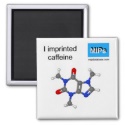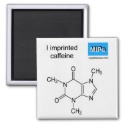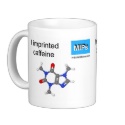|
|
Reference type: Journal
Authors: Qin L, He XW, Yuan X, Li WY, Zhang YK
Article Title: Molecularly imprinted beads with double thermosensitive gates for selective recognition of proteins.
Publication date: 2011
Journal: Analytical and Bioanalytical Chemistry
Volume: 399
Issue: (10)
Page numbers: 3375-3385.
DOI: 10.1007/s00216-011-4736-6
Alternative URL: http://www.springerlink.com/content/04r3817331l15322/
Abstract: A new approach is reported on the use of poly(N-isopropylacrylamide) (PNIPAM)-coated molecularly imprinted beads (coated MIP beads) for controlling the release of protein. The coated MIP beads were composed of double layers, an internal thermosensitive lysozyme-imprinted layer, and an external PNIPAM layer. The coated MIP beads were prepared by two-step surface-initiated living-radical polymerization (SIP). In this systemic study, the coated MIP beads had good selectivity to the template protein (lysozyme) and temperature stimulus-responsive behavior, both of which were superior to those of MIP beads having a layer of thermosensitive lysozyme-imprinted polymer only. Using the coated MIP beads, reference proteins and the template lysozyme could be released separately at 38 °C and at 23°C. The corresponding coated non-imprinted beads (coated NIP beads) did not have such double thermosensitive gates with specific selectivity for a particular protein. The proposed smart controlled imprinted system for protein is attractive for chemical carriers, drug-delivery system, and sensors
Template and target information: protein, lysozyme
Author keywords: thermosensitive, Molecularly imprinted bead, protein
|


 I imprinted caffeine magnet ball and stick
I imprinted caffeine magnet ball and stick







 I imprinted caffeine magnet
I imprinted caffeine magnet







 caffeine template mug ball and stick
caffeine template mug ball and stick






